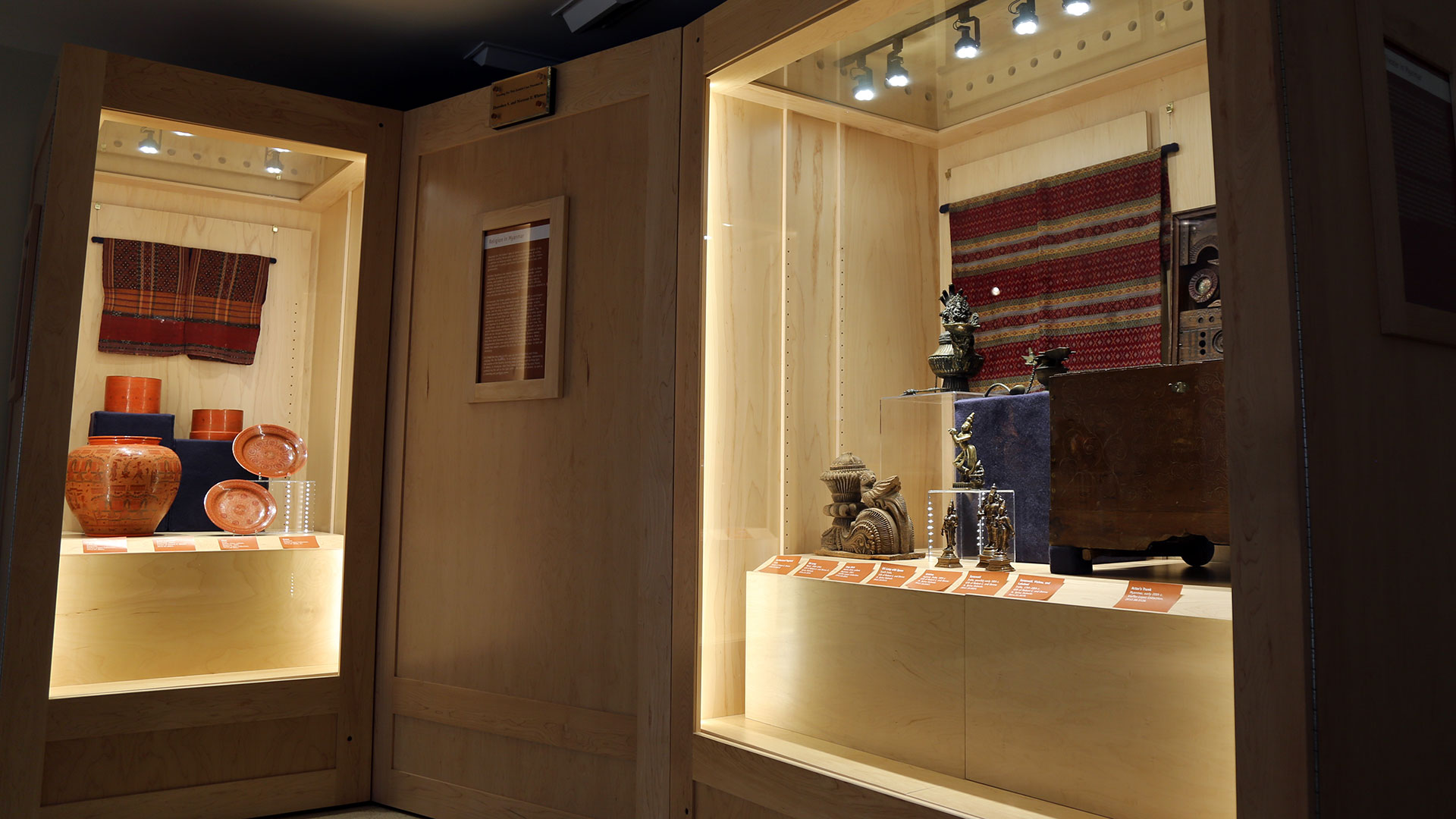
Daily Life, Religion, and Theater in Myanmar
- Duration:Temporary
- Location:Whitten Featured Object Case
(date) 1/6/2015–5/31/2015
Myanmar (Burma) is home to over 135 ethnic groups with different histories and cultures and at least 64 languages. The objects selected for display reflect a few examples of daily life and religious activity in this populous and diverse country.
Betel chewing is a widespread practice throughout Southeast Asia. The steps for preparing betel for chewing include using a special cutting tool to slice it and wrapping the slices in betel leaf with spices such as clove, cardamom, and catechu, a powdered acacia extract. Displaying the ingredients in elaborate nesting bowls, trays, and boxes, like the set in this case, is part of the practice, especially after a meal when guests are present.
Myanmar has the highest ratio of monks to total population of any Buddhist country. Monks and nuns are revered members of society. In addition to religious duties, monks provide education for children and take part in politics and reform movements, often at odds with governments. Burmese Buddhism was heavily influenced by contact with its Hindu neighbors, as evidenced in its adopting the Hindu calendar, certain deities, and symbols. It also incorporates older practices, such as nat worship, the belief in spirits and deities that can possess objects, animals, or people.
Traditional theater in Myanmar is performed by traveling troupes. By moving throughout a region and interacting with audiences, these troupes bring political news, history, religious and moral lessons, the latest fashion trends, and new popular idioms to isolated communities.




